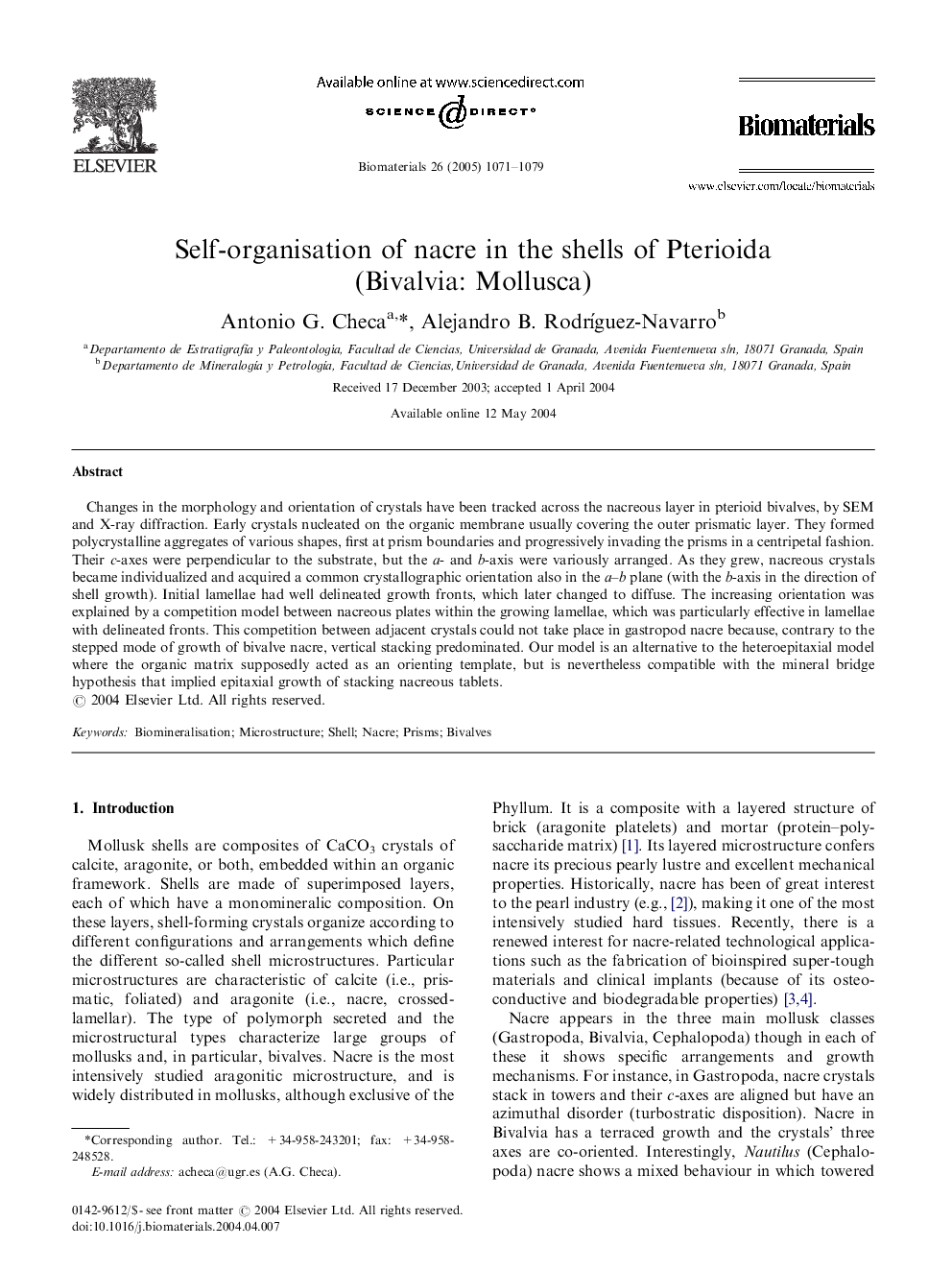| Article ID | Journal | Published Year | Pages | File Type |
|---|---|---|---|---|
| 10230121 | Biomaterials | 2005 | 9 Pages |
Abstract
Changes in the morphology and orientation of crystals have been tracked across the nacreous layer in pterioid bivalves, by SEM and X-ray diffraction. Early crystals nucleated on the organic membrane usually covering the outer prismatic layer. They formed polycrystalline aggregates of various shapes, first at prism boundaries and progressively invading the prisms in a centripetal fashion. Their c-axes were perpendicular to the substrate, but the a- and b-axis were variously arranged. As they grew, nacreous crystals became individualized and acquired a common crystallographic orientation also in the a-b plane (with the b-axis in the direction of shell growth). Initial lamellae had well delineated growth fronts, which later changed to diffuse. The increasing orientation was explained by a competition model between nacreous plates within the growing lamellae, which was particularly effective in lamellae with delineated fronts. This competition between adjacent crystals could not take place in gastropod nacre because, contrary to the stepped mode of growth of bivalve nacre, vertical stacking predominated. Our model is an alternative to the heteroepitaxial model where the organic matrix supposedly acted as an orienting template, but is nevertheless compatible with the mineral bridge hypothesis that implied epitaxial growth of stacking nacreous tablets.
Related Topics
Physical Sciences and Engineering
Chemical Engineering
Bioengineering
Authors
Antonio G. Checa, Alejandro B. RodrıÌguez-Navarro,
